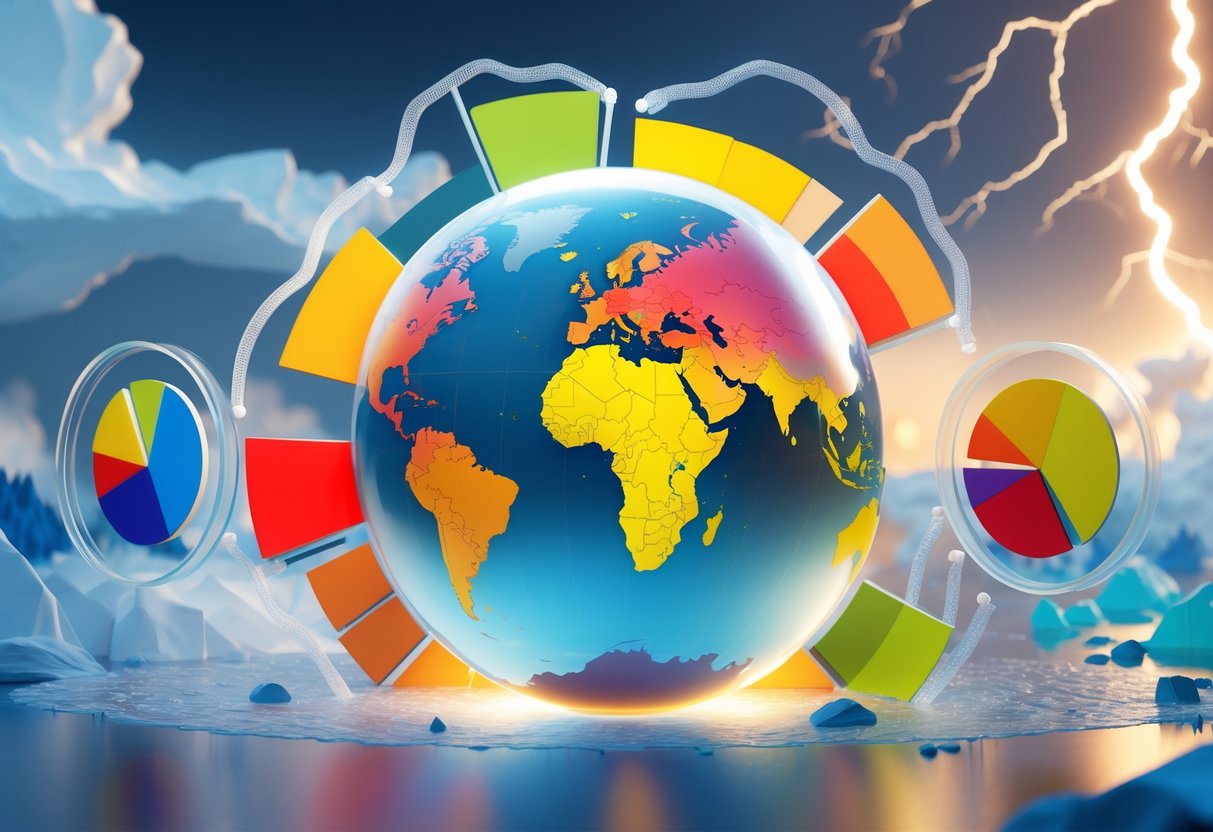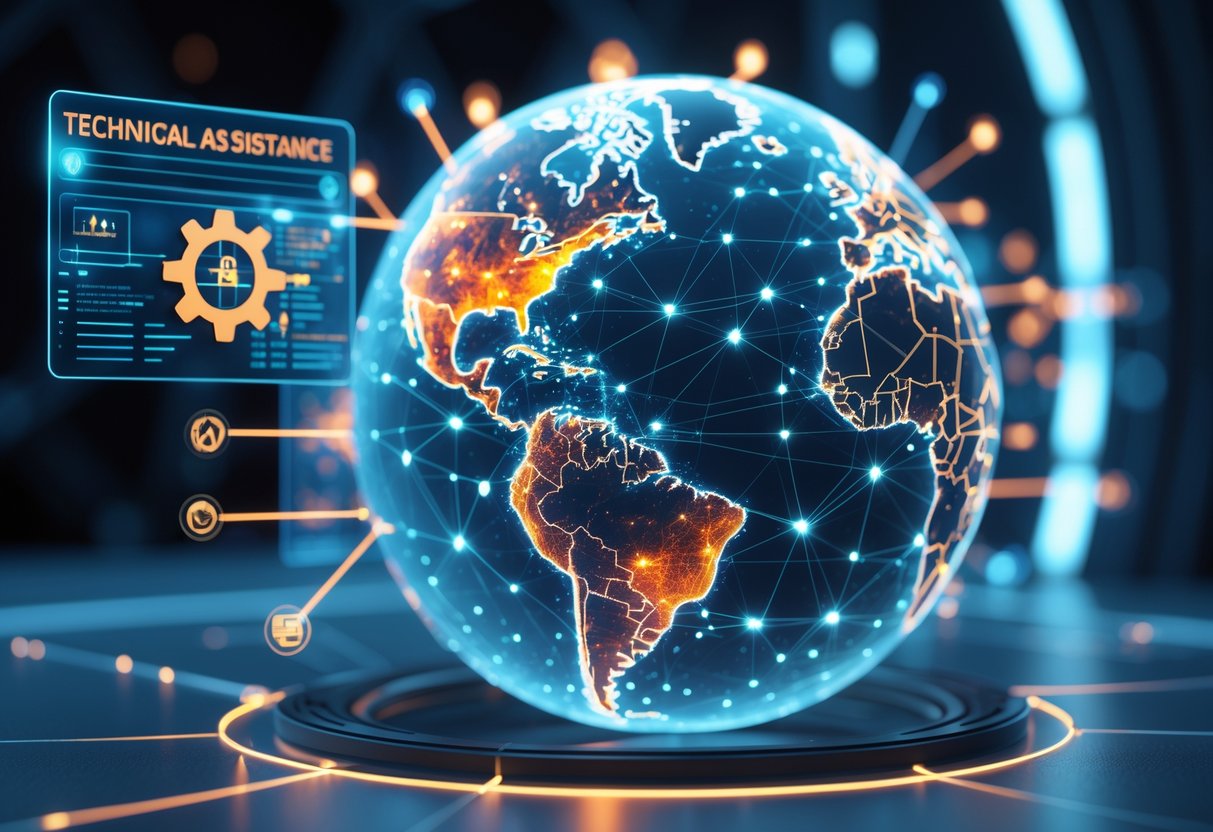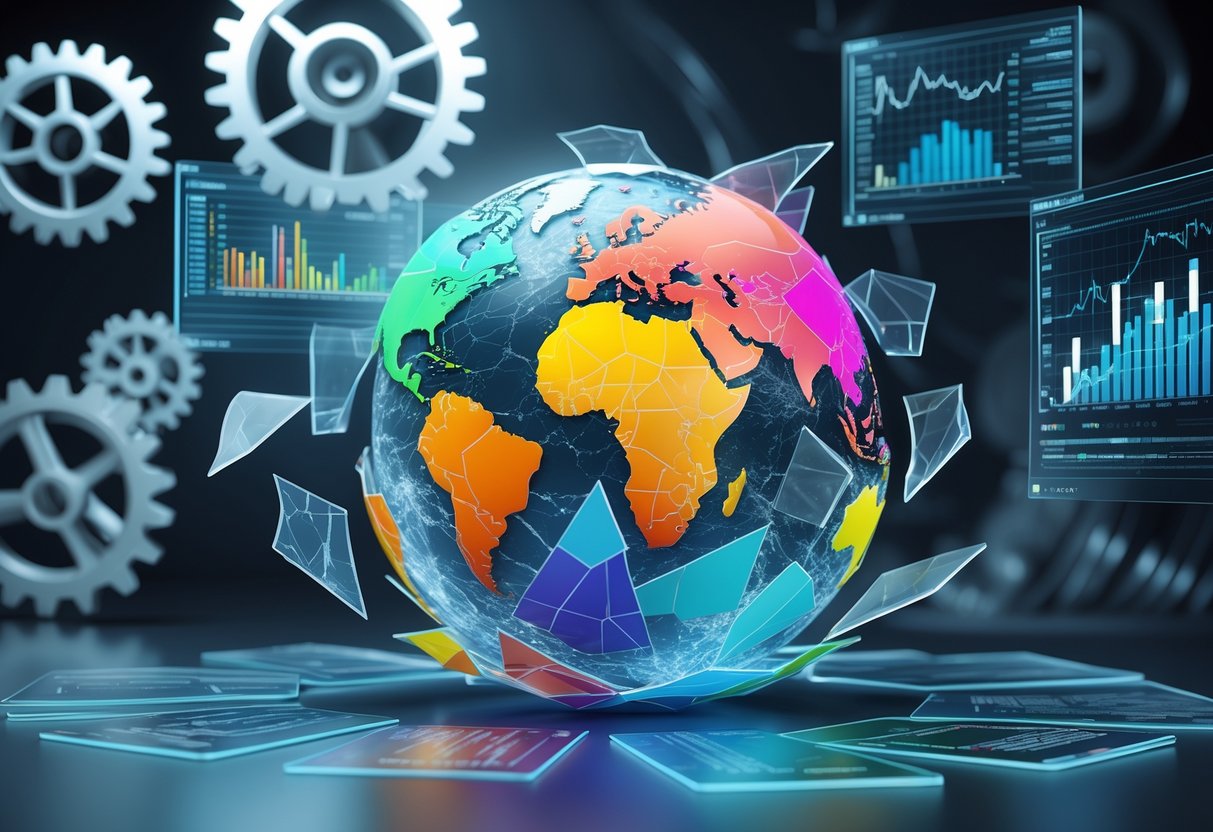Damage Share Importance: Key Factors, Assessment, and Climate Impact
Updated On: October 26, 2025 by Aaron Connolly
Understanding Damage Share

Damage share tells you how much damage each player brings to their team’s total output, as a percentage. This stat lets teams see who’s pulling their weight—or maybe coasting a bit—during fights.
Definition and Key Concepts
Damage share shows your slice of the team’s total damage to enemies. Say your team racks up 100,000 damage and you’re responsible for 25,000 of that, then your damage share clocks in at 25%.
The main ingredients:
- Total damage to champions
- Your percentage of team’s damage
- Role-based expectations
Champions have different targets. ADCs usually shoot for 25-35%. Mid laners often land in the 20-30% zone. Supports? Often just 5-15%.
Damage share isn’t just about big numbers. Someone could drop 40,000 damage but only hit 20% share if their team’s popping off overall. The percentage puts things in perspective.
Role in Various Contexts
Pro teams rely on damage share for performance reviews during scrims and matches. Coaches dig into these numbers to spot who’s lagging or which strategies really work.
Ranked players watch their own damage share to judge their impact. Sometimes, you’ll see a player with a flashy KDA but a weak damage share—maybe they’re too passive when it counts.
Tournament analysts often point to damage share when talking about MVPs. If a player keeps up high damage share game after game, it says a lot about their consistency.
Draft strategies take damage share into account too. Teams building around a hypercarry ADC might accept lower shares from other roles. Poke comps? They spread the damage more evenly.
Fundamental Metrics
Target ranges by role:
- ADC: 25-35%
- Mid: 20-30%
- Top: 15-25%
- Jungle: 12-22%
- Support: 5-15%
Context can really skew things. Short games mess with the numbers since there aren’t as many fights. Longer games give you more reliable stats.
We usually pair damage share with other stats for a clearer picture. Damage per minute tracks consistency. Gold efficiency shows how well players turn resources into damage.
Benchmarks to watch:
- Damage share above your role average
- Consistency over several games
- Higher damage share in wins
Pros tend to beat these numbers thanks to better mechanics and positioning.
Importance of Damage Share in Loss and Damage
Damage share decides how climate losses get split among those affected and the folks footing the bill. This setup shapes who pays for recovery and how fast communities can get back on their feet after disasters.
Significance for Stakeholders
Government agencies use damage share calculations to spread emergency funds fairly. If flooding hits several regions, these numbers help them pick who gets urgent help and who waits.
Insurance companies lean on damage share to set premiums and figure out payouts. Having a clear system lets them price policies better for different risks.
International donors need damage share frameworks to coordinate aid. Without them, some places might get double help while others get overlooked.
Community groups benefit from a transparent damage share process. They can fight for their members more effectively when the rules are clear.
Local businesses rely on these systems for quick recovery cash. Small shops just can’t survive long waits for compensation.
Fairness and Accountability
Fair damage share systems make sure vulnerable communities get the support they need. These setups stop richer areas from grabbing more than their share.
Historical responsibility matters a lot in these decisions. Countries that caused more climate change often get pressured to pay a bigger chunk.
Transparency rules let communities track where money goes. Public reports on damage share build trust.
Verification steps stop fraud and waste. Independent audits check that funds reach the right people, not just vanish into admin costs.
Clear ways to appeal let communities fight unfair decisions. That keeps the process honest and guards against bias.
Impact on Recovery
Recovery speed hinges on how fast teams calculate damage share. Slow assessments mean slow funding, which drags out rebuilding.
Accurate damage share assessments give communities a shot at stronger, climate-ready infrastructure. With the right funding, they can build back better—not just patch things up.
Mental health improves when damage share systems actually work. People recover faster if they get fair compensation without endless red tape.
Economic recovery rides on fair damage share. Local businesses need funds quickly to reopen and bring back jobs.
Long-term planning only works if damage share systems provide predictable funding. That way, communities can prep for the next challenge, knowing help will come.
Risk Management and Damage Share

Risk management matters a lot when people or teams share losses from damage. By spreading risks, everyone can lower their exposure and stay in better control of possible financial impacts.
Evaluating Potential Risks
We need to spot and assess every possible damage scenario before we agree to share risks. This step helps everyone know what they’re signing up for and how much risk each side gets.
Start by listing every kind of damage that could happen. Think equipment failures, venue issues, tournament cancellations, and player injuries. Give each risk a real price tag and a likelihood.
Try this framework:
- High probability, high cost: Major equipment breakdowns in finals
- High probability, low cost: Small tech hiccups
- Low probability, high cost: Venue cancellations
- Low probability, low cost: Stream glitches
Spell out who handles each risk in your damage share deal. Some orgs split tech risks one way and venue risks another.
We suggest setting up a shared risk register everyone can see. Update it as new threats pop up or old ones change.
Minimising Future Losses
Once we know the risks, we can act to cut down both their chances and their impact. Good prevention saves everyone money in the long run.
Stick to regular equipment checks and keep backups ready. Many events flop because teams skip the basics. Always have spare gear and test everything before showtime.
Key ways to prevent losses:
- Check equipment often
- Have backup internet
- Build an emergency fund
- Coordinate insurance
Train your people on how to handle gear and what to do in a crisis. If everyone knows their job, you can contain problems fast.
Work with suppliers who guarantee their equipment. That way, some risk shifts from your group to the pros.
Set up fast ways to report issues. Quick action often means the difference between a small hiccup and a big loss.
Damage Assessments: Methods and Accuracy
Damage assessment teams use structured methods, precise tools, and new tech to check property losses. These approaches keep results consistent and help insurers and property owners make smarter decisions.
Assessment Methodologies
We use a few core methods to check property damage. Field assessments are the starting point. Teams visit the site, snap photos, take measurements, and jot down notes.
Replacement cost analysis figures out what it’d cost to rebuild or replace stuff today, using current prices and labor. Market value assessments look at similar properties to set fair compensation.
Income approaches work for commercial spots. We estimate lost rent or business profits from the damage. Historical reviews compare financial records from before and after the event.
Forensic accounting digs up hidden losses or fake claims by combing through records. Teams also use discounted cash flow analysis to put a current value on future losses.
Usually, we start with an entitlement review. We check contracts and laws to see what damages can actually get paid out.
Ensuring Accurate Results
We get accuracy by sticking to strict documentation and double-checking everything. Teams gather all kinds of evidence—photos from all angles, witness statements, expert opinions.
Data triangulation helps us spot problems. We compare info from lots of sources to catch inconsistencies. Teams log weather, event timelines, and any old damage separately.
Quality control checks happen at every step. Senior staff review junior work before reports go out. Standard forms and checklists keep things consistent.
Getting stakeholders involved makes results better. Property owners, contractors, and insurers share info so nothing important slips through the cracks.
Regular training keeps teams up to date. We tweak our methods as new rules or court cases come along.
Technological Innovations
Modern tech has changed how we assess damage. Drones grab aerial shots of big properties safely and fast. You can see things from above that you’d miss on foot.
3D scanning builds detailed digital models of damaged buildings. That means more accurate measurements than old-school tape measures. Mobile apps let us upload photos and notes on the spot.
AI tools spot damage patterns automatically. Software compares before-and-after images to highlight changes. Cloud platforms let teams share data instantly.
Satellite imagery helps with disaster zones—teams can spot affected areas before sending anyone in. Thermal imaging finds hidden water damage behind walls.
Digital documentation cuts down on paperwork and mistakes. All the evidence gets stored with time and location stamps. That speeds up claims and helps with risk decisions.
Damage Share in the Context of Climate Change

Climate change brings unavoidable costs, and someone has to split the bill. Environmental factors and long-term effects shape how these financial hits land on different places and people.
Influence of Environmental Factors
Local conditions decide how climate damage costs get shared. Coastal areas pay higher insurance and repair bills because of sea-level rise and storms.
Island nations get hit hardest. They lose land to rising seas—sometimes for good.
Developing countries take on bigger damage shares compared to what they can afford. Their locations put them in the path of more extreme weather, and they don’t have deep pockets for recovery.
Temperature changes hit farming regions in different ways. Some areas lose their main crops and have to rebuild their whole economy. Some deserts might just become unlivable.
Water shortages drive up costs in dry places. These regions have to spend big on new water systems or deal with people moving out.
Long-Term Implications
Loss and damage from climate change stick around way past the first round of repairs. These costs reshape budgets and international ties for years.
Future generations inherit huge adaptation bills. Sea walls, moving infrastructure, and new farming methods all need steady funding. Most communities can’t cover these costs alone.
Economic displacement often lasts forever. Whole industries—tourism, fishing, farming—might never bounce back in hard-hit regions.
International systems for sharing damage are still pretty weak. The Paris Agreement mentions loss and damage but doesn’t spell out who pays. That leaves vulnerable countries hanging.
Insurance companies might even pull out of high-risk areas. If they can’t make it work, governments have to step in, usually at a steep price.
International Frameworks and Agreements

Global climate agreements lay the legal groundwork for tackling loss and damage from climate impacts. The United Nations has taken the lead here, using major treaties to push things forward. COP28 brought some real momentum, especially with the creation of new funding mechanisms.
Role of United Nations
The UN Framework Convention on Climate Change stands as the main treaty for global climate action. Back in 1992, almost 200 countries signed on to prevent dangerous climate change.
This agreement set the stage for what came later. The 1997 Kyoto Protocol and the 2015 Paris Agreement both grew out of this original framework.
Key UN contributions:
- Setting legal guidelines for managing environmental damage
- Helping nations work together
- Creating accountability systems for climate action
The Paris Agreement, in Article 8.1, openly recognizes loss and damage. It talks about “averting, minimising and addressing loss and damage associated with the adverse effects of climate change.”
The UN also develops what experts call “international disaster response laws, rules and principles” (IDRL). Still, there are real gaps in how far these frameworks reach and what they cover.
Evolution Through COP28
COP28 really changed the game for loss and damage funding. Countries agreed to set up a dedicated fund to help vulnerable nations handle climate impacts they just can’t adapt to.
This fund is the first solid financial tool made just for loss and damage. Earlier agreements mostly stuck to cutting emissions and adaptation.
COP28 brought:
- The creation of the Loss and Damage Fund
- Initial funding promises from developed nations
- Operational guidelines for how the fund gets distributed
This agreement goes further than the old ways. It brings in transformational risk management and covers both sudden disasters and slow changes like sea-level rise.
Now, several international bodies work together in what researchers call the “institutional ecosystem for Loss and Damage.” They join forces to lower climate risk and support affected communities.
Santiago Network and Technical Assistance

The Santiago Network links vulnerable developing countries with technical experts to tackle climate-related loss and damage. It aims to build local capacities using country-driven strategies and inclusive support.
Objectives of the Santiago Network
The Santiago Network acts like a matchmaking service for developing countries and technical assistance providers. It connects vulnerable nations with organizations, experts, and networks that can actually help them manage climate risks.
This network runs on a demand-driven model. Countries ask for technical help based on what they need most. That way, support fits national priorities instead of being forced from the outside.
Key focus areas:
- Stopping climate risks before they cause damage
- Minimising unavoidable losses
- Dealing with existing loss and damage
The network puts vulnerable groups first in its programs. Women, children, youth, and Indigenous Peoples often get hit hardest by climate impacts, so they get special attention.
Countries can request help at any level—local, national, or regional. Government agencies, universities, NGOs, and civil groups can all submit requests through their country’s process.
Enhancing National Capacities
The Santiago Network wants to build lasting national skills, not just offer quick fixes. Technical assistance focuses on passing on knowledge and teaching skills within the countries themselves.
Capacity building happens through:
- Training local experts and organizations
- Developing national assessment tools
- Setting up sustainable response systems
- Creating ways to monitor and evaluate progress
The network holds regional workshops to introduce countries to available services. These workshops help nations figure out how to get technical help and spot where their biggest gaps are.
All support follows inclusive methods that factor in local needs. The network works to make sure capacity building reaches grassroots communities, not just national agencies.
They track progress on both short-term results and long-term sustainability. This way, technical assistance actually boosts national capacity to handle climate-related loss and damage for the long haul.
Mitigation Strategies and Damage Reduction
Good mitigation cuts down damage before disasters hit by lowering both the odds and the impact. Smart planning means tying risk assessments directly to protective actions for communities facing climate threats.
Integrating Mitigation With Assessment
We get the strongest results when we let damage assessments guide our mitigation plans. Basically, we learn from past disasters and use that knowledge to build better defences.
Risk-based planning just works. Teams figure out which places are in the most danger first. They check flood zones, earthquake risks, storm paths—the whole lot. This info tells us where to invest in protection.
Building codes get tougher when we study how things broke down in past disasters. After a flood, planners check which buildings survived. New rules then demand better materials and designs for risky spots.
Bringing in the community is huge. Locals know their own vulnerabilities. They remember past disasters and know which areas always flood. Planning teams gather these stories in meetings and surveys.
Financial tools spread out the risk. Insurance and disaster bonds give communities cash to rebuild. They also encourage property owners to make their buildings safer, with lower premiums for protected homes.
Linking Mitigation and Adaptation
Climate change has made old weather patterns unreliable. We have to plan for hotter days, stronger storms, and weird rainfall—stuff that wasn’t a problem before.
Adaptation planning looks forward. Instead of just fixing old problems, smart cities and towns get ready for what’s coming. Coastal places plan for rising seas. Cities set up cooling centers for heatwaves.
Nature can be our best shield if we protect it. Wetlands absorb floods, forests slow landslides, mangroves block storm surges. Often, these green solutions cost less than pouring concrete.
Urban planning is shifting. Cities now require green roofs to handle stormwater. They plant more trees to cool things down. Building setbacks from rivers are getting bigger to prepare for bigger floods.
Early warning systems give people a head start. Modern weather tech can spot danger days ahead. Mobile alerts reach everyone fast. Good evacuation plans get people out before disaster strikes.
Stakeholder Involvement and Collaboration

Managing damage share costs in esports really depends on involving the right people from the very beginning. Building strong relationships with venues, sponsors, insurers, and tournament organizers helps everyone set up clear agreements before anything goes wrong.
Community Engagement
We should bring local gaming communities into the planning process early. Community leaders often know the risks in their area better than outside organizers do.
Gaming cafés and local venues spot patterns in equipment breakdowns. They know which setups lead to the most damage claims. Their input during planning can save money down the line.
Community feedback helps set realistic damage share rates. Local tournament organizers can share real numbers on repair costs. This way, we avoid setting expectations too high or too low.
We need clear ways for community input on damage policies. Discord, Facebook groups, and Reddit give direct access to player opinions. Regular surveys help track how people feel about damage share rules.
Heads up: Ignoring community pushback on damage policies can shrink tournaments and drive up per-person costs.
Institutional Coordination
Big tournaments need tight coordination between lots of organizations. Venues, sponsors, equipment suppliers, and insurance companies all need to know exactly how damage will be shared.
We should set up formal communication channels between stakeholders. Monthly meetings during planning keep everyone on the same page. Written agreements help avoid fights when equipment gets damaged.
Risk management works better when institutions share info. Venue managers can point out known hazards. Equipment suppliers can flag risky setups before they’re installed.
Insurance companies usually want to see all stakeholders involved before they’ll cover an event. They need proof that everyone understands their damage responsibilities. If you skip this, you might lose coverage completely.
Insurance brokers should join planning meetings. They spot coverage gaps and make sure the damage share agreements actually fit the insurance policy.
Challenges and Limitations in Measuring Damage Share

Measuring damage share accurately comes with big challenges that can mess with how esports organizations and teams understand their weaknesses. Bad data quality and inconsistent methods leave holes that make comparisons across matches or tournaments tough.
Data Reliability
Getting reliable data for damage share in esports isn’t easy. Different tournaments use their own tracking systems, and not all of them catch every bit of damage.
Recording mistakes happen a lot during intense matches. When several abilities go off at once, some damage gets missed or shows up wrong in automated systems.
Live match data sometimes gets hit by technical glitches. Network lag or server hiccups can make damage look different to viewers than to players.
Post-match checks get tricky if replay systems don’t save full damage logs. Teams trying to review their games might find missing info that ruins their damage share analysis.
Older tournaments are even harder to compare. Many didn’t track damage in detail, so looking back at past performance can be a guessing game.
Standardisation Issues
Esports titles and tournament organizers all seem to have their own way of calculating and showing damage share stats. This lack of consistency makes it nearly impossible to compare across games or events.
Measurement definitions jump around. Some systems only count direct damage to other players, while others include damage to objectives or the environment.
Tournament organizers also use different time frames for damage stats. Some look at damage per minute, others per round, so the numbers don’t always line up.
Third-party tools add another layer of confusion. Teams might use outside software that spits out damage share numbers that don’t match the official broadcast.
Without industry standards, damage assessments can be all over the place. Pro leagues really need unified methods so they can fairly judge player performance across different settings.
Future Research and Emerging Trends

Research on damage share is picking up speed. New tech is making damage assessments more accurate, and better methods are helping us spot risk patterns we used to miss.
Methodological Improvements
Researchers keep finding smarter ways to measure and predict damage. Attribution science is getting sharper, tracing damage back to its exact causes.
Machine learning models now crunch huge datasets from all kinds of sources. These tools can pick up patterns that even sharp human analysts might overlook.
Participatory approaches are catching on. Local communities now add their own data about the damage they see. This boots-on-the-ground info fills gaps left by official records.
Standardised metrics are popping up across industries. We’re starting to see common ways to measure how bad damage is and what it costs. That makes it easier to compare across places and time.
Risk management strategies keep evolving. New models can predict how damage might ripple through connected systems. Organizations use this to get ready for chain reactions and cascading failures.
Integration of Emerging Technologies
Remote sensing tech is changing the way we assess damage in real time. Satellites and drones can scan huge areas right after disasters. That gives us instant data on how much got damaged.
Artificial intelligence speeds up damage detection. AI can scan thousands of images in just minutes. It picks out damaged buildings, roads, and natural areas with surprising accuracy.
Blockchain is making damage tracking more trustworthy. It keeps secure, transparent records that different organizations can check. This helps with insurance and recovery planning.
Internet of Things (IoT) sensors offer round-the-clock monitoring. These gadgets spot structural changes before things fall apart. Early warning systems using IoT data can stop disasters before they get out of hand.
Digital twins are becoming must-have tools for predicting damage. These virtual models let us see how systems might react to all kinds of stress—so we can prepare before anything goes wrong.
Frequently Asked Questions

If you get how damage sharing works, your team can instantly play smarter and make matches a lot fairer. These questions dig into how shared damage systems change teamwork, strategy, and the way players make decisions in esports.
How can understanding the concept of damage sharing benefit a team in cooperative scenarios?
Teams that understand damage sharing make better choices about where to stand during matches. Players realize that sticking close to teammates lets them split up incoming damage.
This kind of knowledge pushes teams to talk more about when to go in or back off. They’ll coordinate their abilities to get the most out of shared damage and avoid unnecessary risks.
A lot of top esports teams actually practise these situations. They figure out which team compositions mesh well with shared damage rules.
That kind of preparation usually pays off when the stakes are high.
In what ways does sharing damage impact overall risk management in group activities?
Shared damage really changes how teams think about risky plays. Instead of one unlucky player taking all the hits, the danger spreads out across the squad.
This setup lets teams get a bit bolder. Players can push forward, knowing friends are there to help soften the blow.
But there’s a catch—teams need to stay close enough to share damage, but not so close that one explosive attack wipes everyone out. That’s a tricky balance.
Risk becomes something the whole group owns, not just one person. Teams that get this usually develop sharper instincts about when to fight and when to run.
What strategies are effective for optimising shared damage mitigation in competitive environments?
Positioning stands out as the biggest deal here. Players have to figure out how close to stand—close enough to share, but not so close they all get hit by an enemy’s big move.
Team composition also plays a huge role. Mixing tough tanks with glass-cannon damage dealers can make a shared damage group much stronger.
Good communication is essential. Pro teams often have special callouts for when to start or stop sharing damage.
Honestly, teams that practise these scenarios regularly just handle them better when it counts.
Could you explain how damage distribution among participants influences collective performance?
When everyone takes a bit of the damage, no one becomes the obvious weak link. Opponents have to rethink their targeting during fights.
Teams that spread out the pain can stick around longer in battles. They keep fighting even under heavy pressure.
Shared damage also shifts the skills players need. Movement and positioning become even more important, and everyone has to adapt.
When everyone shares the consequences, decision-making gets more thoughtful. One person’s mistake can drag down the whole group, so people tend to pay more attention.
What are the key factors to consider when designing a system that incorporates damage sharing?
Game designers need to balance individual skill with team coordination to keep things fun and challenging. The best systems reward both solo plays and smart teamwork.
The range for sharing damage has to feel natural. If it’s too big, positioning doesn’t matter; if it’s too tiny, it barely ever comes into play.
Players need clear visual or audio cues to know when sharing is active. Confusion during a fight is the last thing anyone wants.
Honestly, different game modes might need their own rules for damage sharing. What works in a casual match could totally break a pro tournament.
How does the allocation of shared damage affect individual decision-making in team-based settings?
When players know they’ll share damage, they’re more likely to take calculated risks. The result? Gameplay feels a lot more dynamic—and honestly, a bit more thrilling.
You’ll find that people start paying attention to where their teammates are on the map. Suddenly, it’s not just about staying alive yourself; it’s about what works best for the whole group.
Teams have to rethink how they manage resources. Sharing damage means everyone needs to coordinate healing items and defensive moves, or things can go sideways fast.
With everyone facing the same consequences, players usually make decisions faster. Trust builds up, and the team just reacts—sometimes it’s messy, but it’s almost always interesting.

